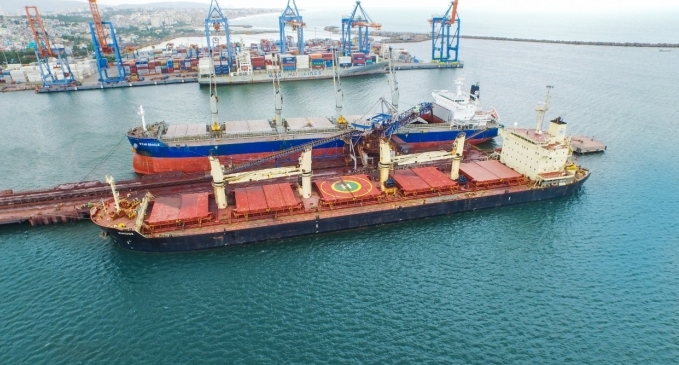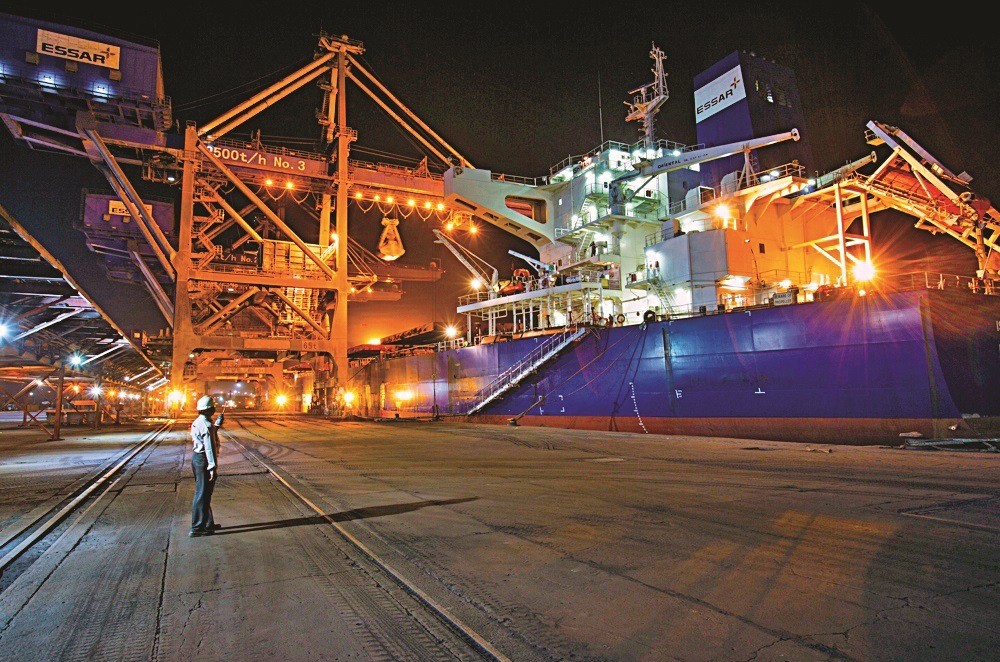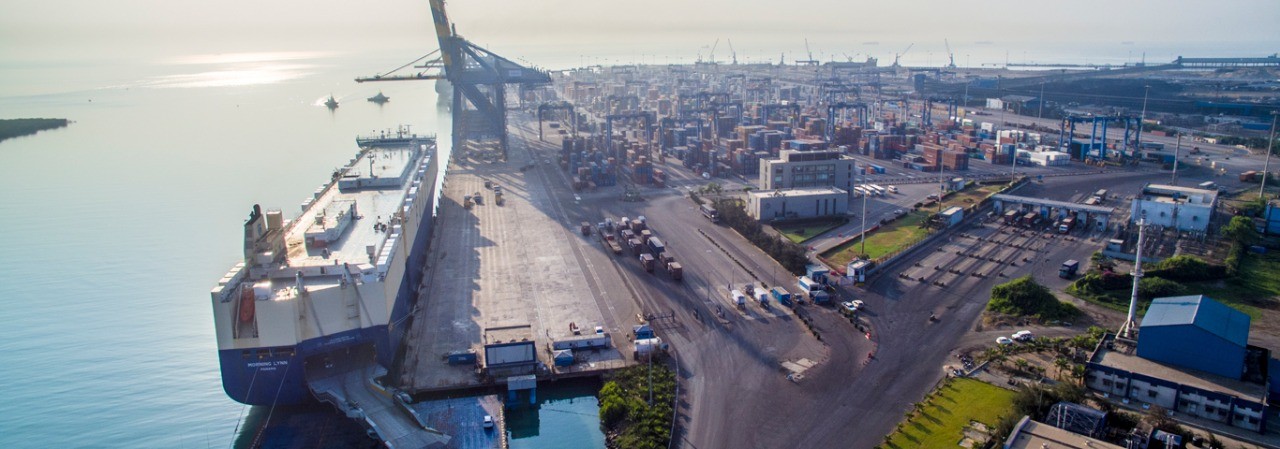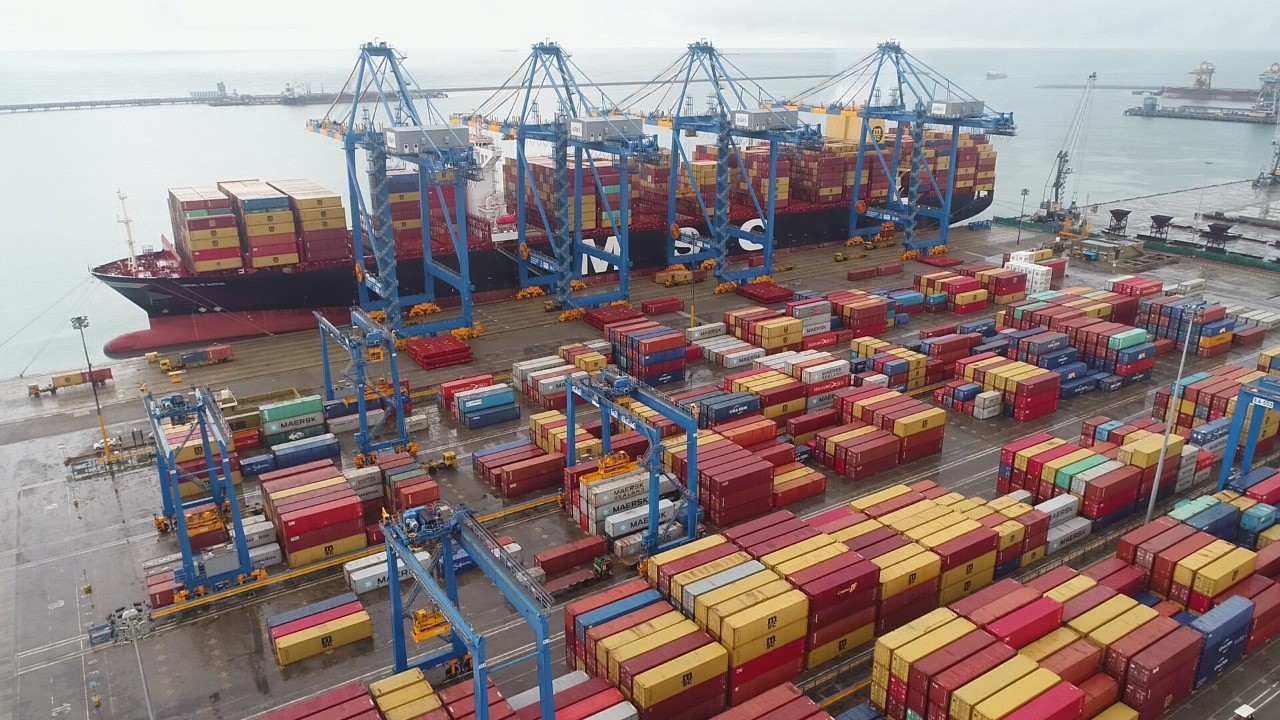Sailing in rough waters, ports & terminals invest for future demand
Indian ports and terminals are going through one of the most challenging times in their history both caused by Covid-19 as well as the internal weakness. This includes steep slump in the volumes, congestions with long waiting times, container shortage and high freight rates.

Both from the regulatory and investment point of view, the country’s port sector is looking forward to a bright future not only to handle increased volumes but also to become a transshipment hub for South Asia. However, on the ground, Indian ports and terminals are going through one of the most challenging times in their history both caused by Covid-19 as well as the internal weakness. This includes steep slump in the volumes, congestions with long waiting times, container shortage and high freight rates.
India has 12 publicly-owned major ports and 200 non-major ports spread across its 7516 kilometres long coast, which handles 95 percent of the country’s total trade by volume and 70 percent by value. As the seaports operate as India’s gateway to the world, the evolution of these ports and terminals could determine how the economy develops.
Covid-19 pandemic had a huge impact on the business of running ports and terminals due to a drop in industries and manufacturing operations. Right now the Indian shipping industry is also facing the scarcity of containers caused by trade imbalance with China, congestions due to customs digital rollout and surging freight rates due to peak season.
Amidst all these challenges, the ports and terminals in India are looking ahead with new investments, regulations and digital capabilities to take on the challenges of the future. The government of India wants both the western and eastern coast has its own transhipment points and has initiated regulations that could declutter the existing complications in the sector. Meanwhile, both foreign and Indian private players in the ports sector have announced new investments into developing ports, terminals and special economic zones around it.
Covid-19
According to the data released by the Indian Ports Association, from April to October 2020, cargo traffic in major ports declined by 12.43 percent to 354.18 million tonnes compared to the same period last year.The impact of Covid-19 pandemic is clearly visible with a sharp decline in all commodities including containers, coal and petroleum, oil and lubricant.
Rajiv Agarwal, chief executive officer and managing director, Essar Ports, The Covid-19 pandemic severely impacted the operations of many industries and sectors. The first phase of the lockdown for the ports sector, unfavourably affected the industrial activities and operations, reduced demand, restricted movement of manpower and cargo. The disparity between the demand and supply impacted the shipping volumes which eventually led to a downward trend in business and growth while the costs remained high.”
“At Essar Ports, we have seen a considerable increase in our cargo handling numbers after an initial dip in April 2020. Along our terminals along the western and eastern coasts of the country are already performing at pre-Covid levels. We witnessed our recovery to be quick due to increased demand from the power, steel, mining and oil sectors. Over the past six months, Essar Ports has recorded revenue for 23.8 million tonnes of cargo, despite a slowdown,” he added.
Ranjit Singh, president and chief executive officer of Essar Shipping, said, “The Covid-19 pandemic has surely stalled the whole world with a huge impact on the entire economy and business operations of various industries and sector. Like any other sector, the shipping sector too faced the consequences of the virus. The lockdown imposed through the country severely impacted port and cargo operations which led to delays in the berthing of vessels, clearance of documents and movement of manpower and material resulting in demand reduction and utilisation of ships.”

Atmanirbhar Bharat is expected to change the mix of commodities currently transported through Indian seaports and alter the dynamics of the port sector as well.
Aatmanirbhar Bharat
Though India is yet to take advantage of the shifting supply chains from China +1 policy of multinational manufacturing giants, the Indian government initiated several measures to make India a manufacturing hub and reduce the dependency of China for many commodities.
Atmanirbhar Bharat or self-reliant India is a vision announced by the prime minister in May 2020 shortly after the spread of Covid-19 pandemic and the standoff with China to entertain local manufacturing and attract global supply chains to the country. This will definitely change the mix of commodities currently transported through Indian seaports and alter the dynamics of the port sector as well.
Agarwal, said, “The lockdown imposed in India due to Covid-19 pandemic, significantly impacted the entire nation and its economy. In times of such uncertainties, Aatmanirbhar Bharat is indeed a well thought out roadmap to encourage people to be ‘vocal for local’ for a future-ready India.”
“It will surely pave way for local manufacturers and create opportunities for the ports sector by reducing India’s dependence on overseas hubs to import and export cargo. The move will not only promote the import of raw material and export of finished and intermediate goods but will also give a significant boost to the economy. Overall, Indian ports sector and Essar Ports is well placed to cater to the upcoming opportunity,” he added.
Singh noted, “Infrastructure is the backbone of any economy and plays an integral role in nation's prosperity. The Atmanirbhar Bharat scheme rolled out by the government will enable more public sector contracts awarded to the Indian shipping industry. Thus, reviving the engine of growth for the industry.”

While surging exports and decreasing imports is good for any country at any given point in time, India doesn’t have enough containers to mitigate the imbalance created in this equation.
Container shortage, congestions, freight rates
During the last four months, exports through Indian ports were increasing while the imports are falling, especially that originates from China and particularly after the military standoff with that country and the trade restrictions India put up. While surging exports and decreasing imports is good for any country at any given point in time, India doesn’t have enough containers to mitigate the imbalance created in this equation.
Most of the Inland Container Depots (ICDs) throughout the country are severely affected due to the shortage of containers. Particularly V O Chidambaranar Port Trust in Tuticorin is very badly impacted also due to its dependency on Port of Colombo in Sri Lanka for transshipment and the local problems there.
Sharad Kumar Saraf, president, Federation of Indian Export Organisations (FIEO), said “The shipping logistics is in a mess right now. There has been a tremendous shortage of containers in Indian ports for the last four months now. We need at least 50,000 containers immediately. Every exporting industry segment that needs containers to move their goods are suffering, including engineering, textiles and chemicals. Unfortunately, there is no action taken by the government to solve this.”
FIEO has proposed a three-point solution to this. First, where there are containers available should be moved to places where there is scarcity. Second, by a rough estimate, there are 50,000 containers seized by customs and enforcement directorate at different parts of the country. If all those containers are brought, this could solve the problem immediately. Third, shipping lines should be asked to bring empty containers from where ever they are available like the ports of Singapore or Dubai.
Saraf continued, “With the rolling out of the new digital faceless assessment/inspection of goods, customs agencies are delaying the export goods by at least 15-20 days, particularly at the seaports, whereas the previous dwell time was maximum three days. Above all, in the last four months, the ocean freight rates from Indian ports to Europe and the United States have gone up 70 percent.”

India plans to have two transshipment hubs. One at the Great Nicobar Islands on the eastern coast and the other at the Vallarpadam terminal of Cochin port on the western coast.
Transshipment ambitions
Prime minister Narendra Modi very recently renamed the country’s ministry of shipping as the ministry of ports, shipping and waterways to bring clarity into the name and the work, while inaugurating the Ro-Pax terminal at Hazira, Gujarat.
“In most of the developed countries, the ministry of shipping handles ports and waterways. Our shipping ministry has been doing several works related to ports and waterways. Now with more clarity in name, there will be more clarity in the work. Today, the capacity of the ports is also being increased across the nation and the construction of new ports is also going on at a faster pace. Efforts are being made to put maximum use of about 21,000 km of waterway in the country for the development of the country. Under the Sagarmala project, work is going on over 500 projects across the country. Many projects worth lakhs and crore rupees have been completed,” he added.
In a visit to Andaman & Nicobar Islands in August, the prime minister also announced the proposed construction of a transshipment port in Great Nicobar at a projected cost of around ₹10 thousand crore.
“Our target is to complete its first phase in the coming 4-5 years. Once this port is ready, big ships will also be able to anchor here. This will increase India's share in maritime trade and provide new opportunities to our youth,” he said.
Since the islands are located at a very competitive distance from many ports of the world, he also laid out plans to develop it as a hub of port-led development. Meanwhile, India has already envisaged its first transshipment hub at Vallarpadam Terminal (Kochi International Container Trans-shipment Terminal) at Cochin Port in the south western coast, managed by DP World. Right now, the Port of Colombo in Sri Lanka serves as the transshipment hub for a bulk of cargo from India.
Agarwal, said, “The prime elements that have facilitated Essar Ports to hold its position in the Indian ports sector is driven by enhanced capacity utilization of our anchor customers, capacity expansion at our terminals and the ability to add new customers. We serve steel, power, mining, manufacturing, heavy engineering and other key industries which are predominantly dependent for import of raw materials in bulk form and export/ coastal movement of finished products form.”
“Essar Ports has been investing extensively in developing and building state-of-the-art mechanised terminals that led to achieving one of the best turnaround times in the Indian ports sector. Our strategically placed terminals, along with import-export facilities and integrated infrastructure enable stronger business growth and giving us and our customers a competitive edge. With the constant growth and profitability achieved, we strongly aim to continue investing in the expansion of our capacity and implementing higher advanced mechanizations to enable even faster turnaround of vessels,” he continued.
Singh said, “Essar Shipping is a pioneer in coastal shipping in India with a 20 percent market share in the dry bulk cargo segment. With the Indian port sector being driven by high growth in external trade, the Indian shipping sector and Essar Shipping are both poised for a significant upswing in maritime trade.”
“Essar Shipping’s has a varied presence across all major and non-major ports of India. One of the fastest developing port of Gopalpur, Odisha, ESL’s MV Arun was the first minicape to import the largest parcel of limestone in India in 2019 enabling the port to join the list of ports handling Capesize vessels. Kolkata Port was able to handle its largest parcel of coal cargo at Sagar anchorage with MV Kishore, ESL’s another minicape bulk carrier in 2018. Until then, the port had handled only Panamax vessels,” he added.
Regulations
The two most important regulatory developments that changed the shipping port sector recently are the passage of Major Ports Bill, 2020 and the launch of dispute resolution mechanism SAROD-Ports (Society for Affordable Redressal of Disputes – Ports).
In a recent release of the credit rating agency ICRA Ratings, senior vice president and group -head K. Ravichandran, said, “The passage of the bill is a positive for the port sector, with increased flexibility for major ports with regards to tariff setting, port infrastructure development and financial decisions. This should aid the major ports in being more competitive and nimble in the market vis-a-vis non-major ports and also boost their ability to attract more private sector investments in the medium to long term.”
While talking about the SAROD-Ports, he said, “The credit profile of several port sector entities has been impacted by large contingent liabilities arising from prolonged disputes and hence the launch of SAROD-Ports should be credit positive for the sector. However, the success of the mechanism remains to be seen, as it will depend on the willingness of existing concessionaires to opt for it.”

Libin Chacko Kurian
Assistant Editor at STAT Publishing Group, he has eight years of experience in business journalism covering food & beverage, nutraceuticals and now logistics. His current passion is to understand the nuances of global supply chains and their current turmoil. Outside work, he is also interested in philosophy, history, birding and travelling. Mail him: libin@statpublishinggroup.com Follow on LinkedIn


